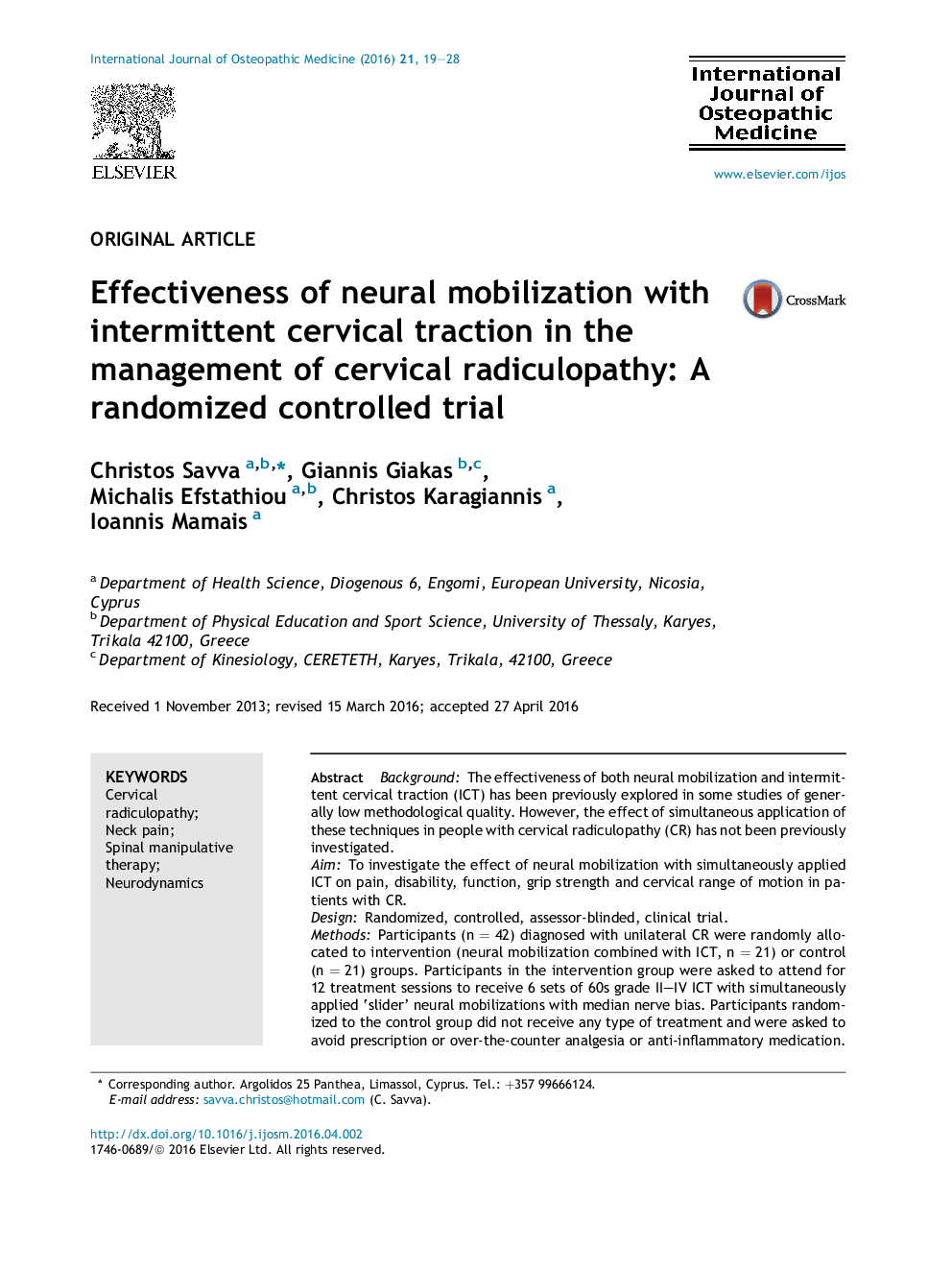| کد مقاله | کد نشریه | سال انتشار | مقاله انگلیسی | نسخه تمام متن |
|---|---|---|---|---|
| 2617967 | 1562987 | 2016 | 10 صفحه PDF | دانلود رایگان |
BackgroundThe effectiveness of both neural mobilization and intermittent cervical traction (ICT) has been previously explored in some studies of generally low methodological quality. However, the effect of simultaneous application of these techniques in people with cervical radiculopathy (CR) has not been previously investigated.AimTo investigate the effect of neural mobilization with simultaneously applied ICT on pain, disability, function, grip strength and cervical range of motion in patients with CR.DesignRandomized, controlled, assessor-blinded, clinical trial.MethodsParticipants (n = 42) diagnosed with unilateral CR were randomly allocated to intervention (neural mobilization combined with ICT, n = 21) or control (n = 21) groups. Participants in the intervention group were asked to attend for 12 treatment sessions to receive 6 sets of 60s grade II–IV ICT with simultaneously applied ‘slider’ neural mobilizations with median nerve bias. Participants randomized to the control group did not receive any type of treatment and were asked to avoid prescription or over-the-counter analgesia or anti-inflammatory medication. The Neck Disability Index (NDI), the Patient-Specific Functional Scale (PSFS), the Numeric Pain Rating Scale (NPRS), and measures of grip strength (GS) and cervical spine active range of motion (CSAROM) were administered at baseline and at 4-weeks.ResultsThe intervention group demonstrated significant improvements in NDI scores (mean difference = −16.95; 95% CI = −22.47 to −11.43, ES = 0.42), PSFS scores (mean difference = 2.88; 95% CI = 2.33 to 3.43, ES = 0.66), NPRS scores (mean difference = −3.74; 95% CI = −4.92 to −2.96, ES = 0.37), GS (mean difference = 1.87 kg; 95% CI = 0.51 to 3.23; ES = 0.07), and CSAROM (except for lateral flexion), compared to the control group where significant changes were not detected.ConclusionNeural mobilization with simultaneous ICT can improve, pain, function, disability, grip strength and cervical range of motion in people with CR. Further clinical trials comparing neural mobilization with cervical traction to other standard interventions are justified.
Journal: International Journal of Osteopathic Medicine - Volume 21, September 2016, Pages 19–28
